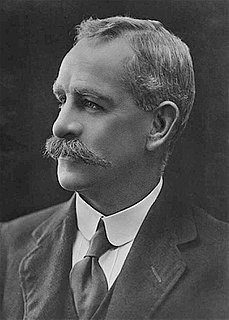| ||||||||||||||||||||||||||||||||||
All 75 seats in the House of Representatives 38 seats were needed for a majority in the House 18 (of the 36) seats in the Senate | ||||||||||||||||||||||||||||||||||
|---|---|---|---|---|---|---|---|---|---|---|---|---|---|---|---|---|---|---|---|---|---|---|---|---|---|---|---|---|---|---|---|---|---|---|
| ||||||||||||||||||||||||||||||||||
| ||||||||||||||||||||||||||||||||||
Federal elections were held in Australia on 5 May 1917. All 75 seats in the House of Representatives and 18 of the 36 seats in the Senate were up for election. The incumbent Nationalist Party, led by Prime Minister Billy Hughes, defeated the opposition Labor Party led by Frank Tudor.

Elections in Australia take place periodically to elect the legislature of the Commonwealth of Australia, as well as for each Australian state and territory. Elections in all jurisdictions follow similar principles, though there are minor variations between them. The elections for the Australian Parliament are held under the federal electoral system, which is uniform throughout the country, and the elections for state and territory Parliaments are held under the electoral system of each state and territory.

The House of Representatives is the lower house of the bicameral Parliament of Australia, the upper house being the Senate. Its composition and powers are established in Chapter I of the Constitution of Australia.

The Senate is the upper house of the bicameral Parliament of Australia, the lower house being the House of Representatives. The composition and powers of the Senate are established in Chapter I of the Constitution of Australia. There are a total of 76 Senators: 12 are elected from each of the six states regardless of population and 2 from each of the two autonomous internal territories. Senators are popularly elected under the single transferable vote system of proportional representation.
Contents
- Results
- House of Representatives
- Senate
- Seats changing hands
- Post-election pendulum
- See also
- Notes
- References
Hughes, at the time a member of the ALP, had become prime minister when Andrew Fisher retired in 1915. The Australian Labor Party split of 1916 over the conscription issue had led Hughes and 24 other pro-conscription Labor MPs to split off as the National Labor Party, which was able to form a minority government supported by the Commonwealth Liberal Party under Joseph Cook. Later that year, National Labor and the Liberals merged to form the Nationalist Party, with Hughes as leader and Cook as deputy leader. The election was fought in the aftermath of the 1916 plebiscite on conscription, which had been narrowly defeated. The Nationalists won a decisive victory, securing the largest majority government since Federation. The ALP suffered a large electoral swing against it, losing almost seven percent of its vote from 1914. The swing was magnified by the large number of former Labor MPs who followed Hughes out of the party.

Andrew Fisher was an Australian politician who served three separate terms as Prime Minister of Australia – from 1908 to 1909, from 1910 to 1913, and from 1914 to 1915. He was the leader of the Australian Labor Party from 1907 to 1915.
The Australian Labor Party split of 1916 occurred following severe disagreement within the Australian Labor Party over the issue of proposed World War I conscription in Australia. Labor Prime Minister of Australia Billy Hughes had, by 1916, become an enthusiastic supporter of conscription as a means to boost Australia's contribution to the war effort. On 30 August 1916, he announced plans for a referendum on the issue, and introduced enabling legislation into parliament on 14 September, which passed only with the support of the opposition. Six of Hughes' ministers resigned in protest at the move, and the New South Wales state branch of the Labor Party expelled Hughes. The referendum saw an intense campaign in which Labor figures vehemently advocated on each side of the argument, although the "no" campaign narrowly won on 14 November. In the wake of the referendum defeat, the caucus moved to expel Hughes on 14 November; instead, he and 23 supporters resigned and formed the National Labor Party. Frank Tudor was elected leader of the rump party. Hughes was recommissioned as Prime Minister, heading a minority government supported by the opposition Commonwealth Liberal Party; the two parties then merged as the Nationalist Party of Australia and won the 1917 federal election. The Nationalist Party served as the main conservative party of Australia until 1931, and the split resulted in many early Labor figures ending their careers on the political right.
During the second half of World War One, the First Australian Imperial Force experienced a shortage of men as the number of men volunteering to fight overseas declined and the casualty rate increased. At the time, military service within the Commonwealth of Australia and its territories was compulsory for Australian men, but that requirement did not extend to conflict outside of Australia. In 1916, Prime Minister Billy Hughes called a plebiscite to determine public support for extending conscription to include military service outside the Commonwealth for the duration of the war. The referendum, held on 28 October 1916, narrowly rejected the proposal. A second plebiscite, held a year later on 20 December 1917, also failed to gain a majority.













